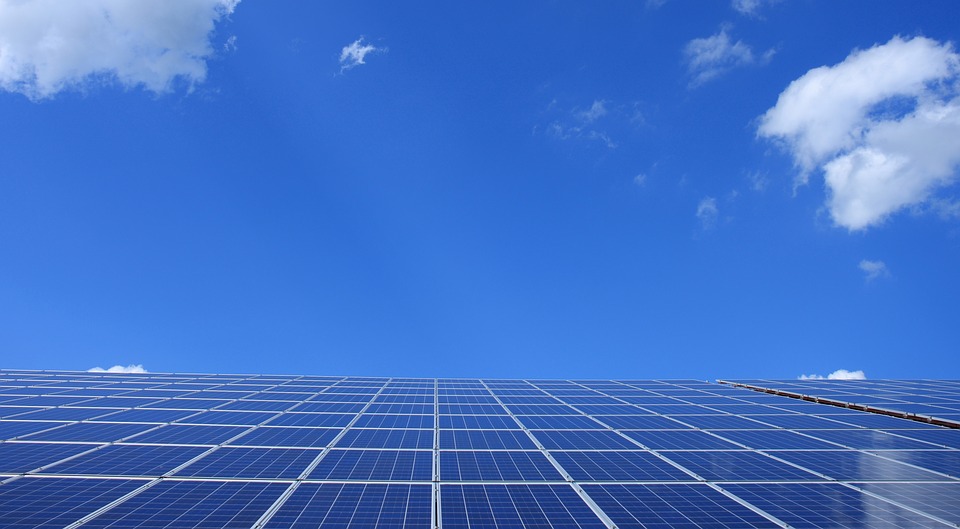State Far Behind on Renewable Energy
Report finds Minnesota has 5 times more wind power, 16 times more solar than Wisconsin.
The idea for the report, called “A Tale of Two States”, was to compare Wisconsin and Minnesota on renewable energy. The researchers from the Chicago-based Environmental Law and Policy Center no doubt expected Minnesota would be doing better, but not that much better.
“We expected to see a difference,” writes Andy Olsen, a senior policy advocate for the non-profit group’s Madison office, “but the findings were still shocking.”
“Neighboring Minnesota and Wisconsin have much in common, but different renewable energy policies have created very different results,” the new report states. “While Minnesota is transitioning quickly from a fossil fuel-dominated economy to a healthy clean energy economy, Wisconsin has made much slower progress.”
How slow? Wisconsin has installed just 6 percent of the wind power that Minnesota has and 20 percent of the solar power. Minnesota ranks 13th best among the states in solar power generated versus 41st for Wisconsin and 8th best in wind power generated versus 25th for Wisconsin.
But where they are far apart is in their state energy policies. “Minnesota has a suite of clean energy policies that help drive the development of wind and solar power,” the report notes, “while Wisconsin has a few modest and outdated policies.”
While Minnesota requires utilities to hit 25 percent renewables by 2025, “Wisconsin has one of the weakest renewable electricity standards in the Midwest,” the report notes. “Having already achieved their modest goal of 10% by 2015, Wisconsin’s outdated RES now does little to spur the growth of renewable energy in the state.”
Minnesota is also ahead of Wisconsin on “interconnection standards” which define how new renewable generation systems can connect to the electric grid. “In 2018, Minnesota adopted modern interconnection standards to make the process more efficient, affordable, and faster,” but Wisconsin hasn’t done this, “so the renewable energy industry remains hampered by red tape and obstruction from monopoly utilities.”
Minnesota is ahead of Wisconsin and much of the nation in creating policies to encourage smaller, community solar projects, which has “led to substantial growth in community solar and business activity in Minnesota.. Wisconsin currently has no specified statewide community solar legislation.”
Minnesota has created net metering policies that make it easier for customers who generate their own renewable electricity to “sell excess electricity that they produce to the grid in exchange for a credit on their bill,” whereas “Wisconsin has a patchwork of widely varying net metering policies,” the report notes. “Minnesota’s net metering policy is more customer-friendly and promotes more renewables generation.”
Finally, Minnesota was the first state (in 2014) to adopt a “Value of Solar” policy that utilities could use instead of net metering. “This methodology reflects the full value of solar and considers the environmental and economic benefits of solar energy.”
For both states, renewable energy offers obvious benefits. Both “must import expensive fossil fuels from other states because neither has fossil fuel resources in-state,” the report notes. During the Scott Walker era, Wisconsin was spending more than $12 billion annually to import coal and gas, rather than investing in home grown renewables like wind and solar power.
Developing renewables enables both states to grow jobs and reduce pollution. “Minnesota has made great strides in reducing reliance on fossil fuels, leading to lower per capita carbon dioxide pollution compared to Wisconsin,” the report notes. “Minnesota’s main source of carbon dioxide pollution is now transportation, followed closely by agriculture and power plants, while Wisconsin’s main source of carbon dioxide pollution is still power production.”
“Wisconsin is behind our neighbors in Minnesota due to years of inaction,” says Melissa Baldauff, spokesperson for Democratic Gov. Tony Evers.
In August, Evers announced Executive Order #38, which “orders the Department of Administration to create the Office of Sustainability and Clean Energy and in partnership with other state agencies and state utilities, achieve a goal of ensuring all electricity consumed within the state of Wisconsin is 100% carbon-free by 2050.”
“A transition to a clean energy economy will generate thousands of family-supporting jobs in Wisconsin” and help “prevent continuing damage to our climate,” Evers noted.
But while that’s an important first step, “Wisconsin still needs a policy environment to get there,” the recent report notes. Some of those policies could come from a new Public Service Commission appointed by Evers, but so long as the Legislature remains unconcerned about the state’s progress in this sphere, Wisconsin is likely to continue lagging behind Minnesota.
If you think stories like this are important, become a member of Urban Milwaukee and help support real independent journalism. Plus you get some cool added benefits, all detailed here.
Murphy's Law
-
Top Health Care Exec Paid $25.7 Million
 Dec 16th, 2025 by Bruce Murphy
Dec 16th, 2025 by Bruce Murphy
-
Milwaukee Mayor’s Power in Decline?
 Dec 10th, 2025 by Bruce Murphy
Dec 10th, 2025 by Bruce Murphy
-
Total Cost of Foxconn Is Rising
 Dec 8th, 2025 by Bruce Murphy
Dec 8th, 2025 by Bruce Murphy






















